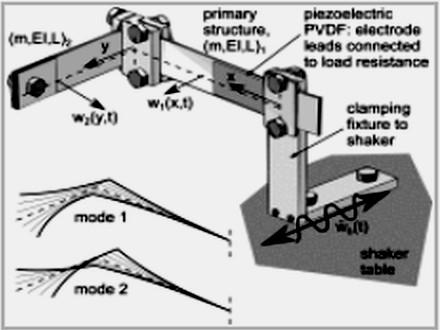Off and on, I’ve been seeing articles on energy harvesting. Energy harvesting (sometimes called energy scavenging, which doesn’t sound quite as good) occurs when energy from ambient sources – solar, wind, thermal – is captured for use in small wireless devices, like a Fitbit or even a smartphone, and in sensor networks, that have very low energy requirements. Unlike energy sources tied to extractive fuels like coal and oil, the energy sources tapped by energy harvesting is free.
One of the articles that I saw a couple of months ago, which was sitting on my blogging back burner, was one on the development of artificial “trees”. Of course, when you hear the words artificial and tree together, you think artificial Christmas tree (or at least I did), but the artificial trees in question here are “tree like structures” that don’t really look like trees. You tell me: does this look like a tree?
The trees have been developed by University of Ohio researchers, and will “be used at the small scale to power sensors that monitor the structural integrity of buildings, bridges and other civil engineering structures.”
“’Buildings sway ever so slightly in the wind, bridges oscillate when we drive on them and car suspensions absorb bumps in the road,’ said project leader Ryan Harne, assistant professor of mechanical and aerospace engineering at Ohio State, and director of the Laboratory of Sound and Vibration Research, in a statement. ‘In fact, there’s a massive amount of kinetic energy associated with those motions that is otherwise lost. We want to recover and recycle some of that energy.’ Harne envisions tiny “trees” feeding voltages to a sensor on the underside of a bridge, or on a girder deep inside a high-rise building. In this way structural monitoring systems could be powered by the vibrations they are monitoring.”
(Source: EE Times)
This is certainly an interesting application, and I suspect we’ll be seeing more of them.
What’s held energy harvesting back has been that it has been more costly when compared to battery power, but this is changing. But as prices go down – and devices become less power hungry – adoption will be more widespread. This will impact the semi-conductor market. According to Semico Research firm, energy harvesting “will drive semiconductor sales worth $3 billion in 2020,” substantial growth from the $200 million value in 2015.” (Source: EE Times)
One great thing about energy harvesting – other than the free part – is that the sources of energy are renewable. Whether those artificial trees really look like trees won’t matter. They’ll be tapping into – make that scavenging – an excellent source of power.
